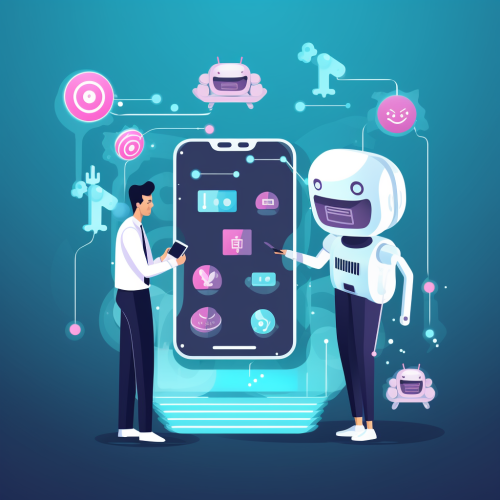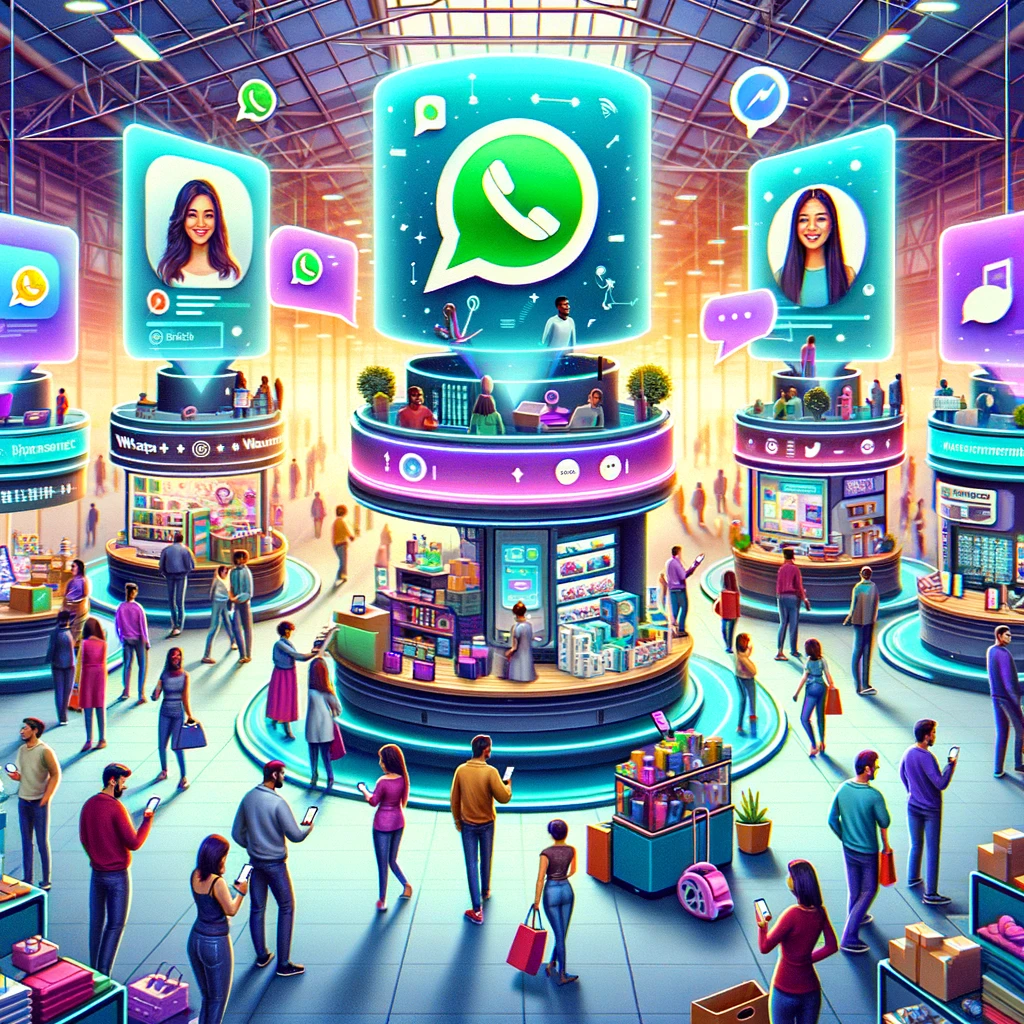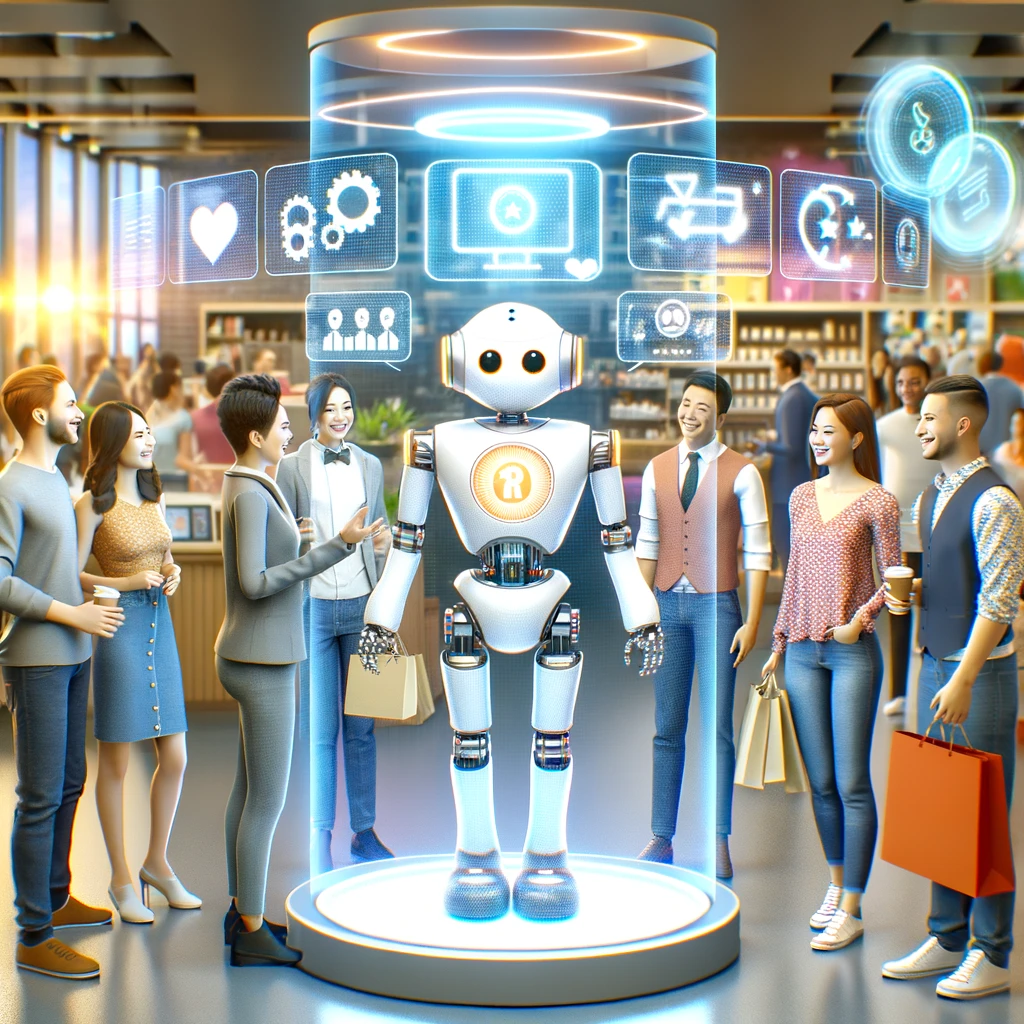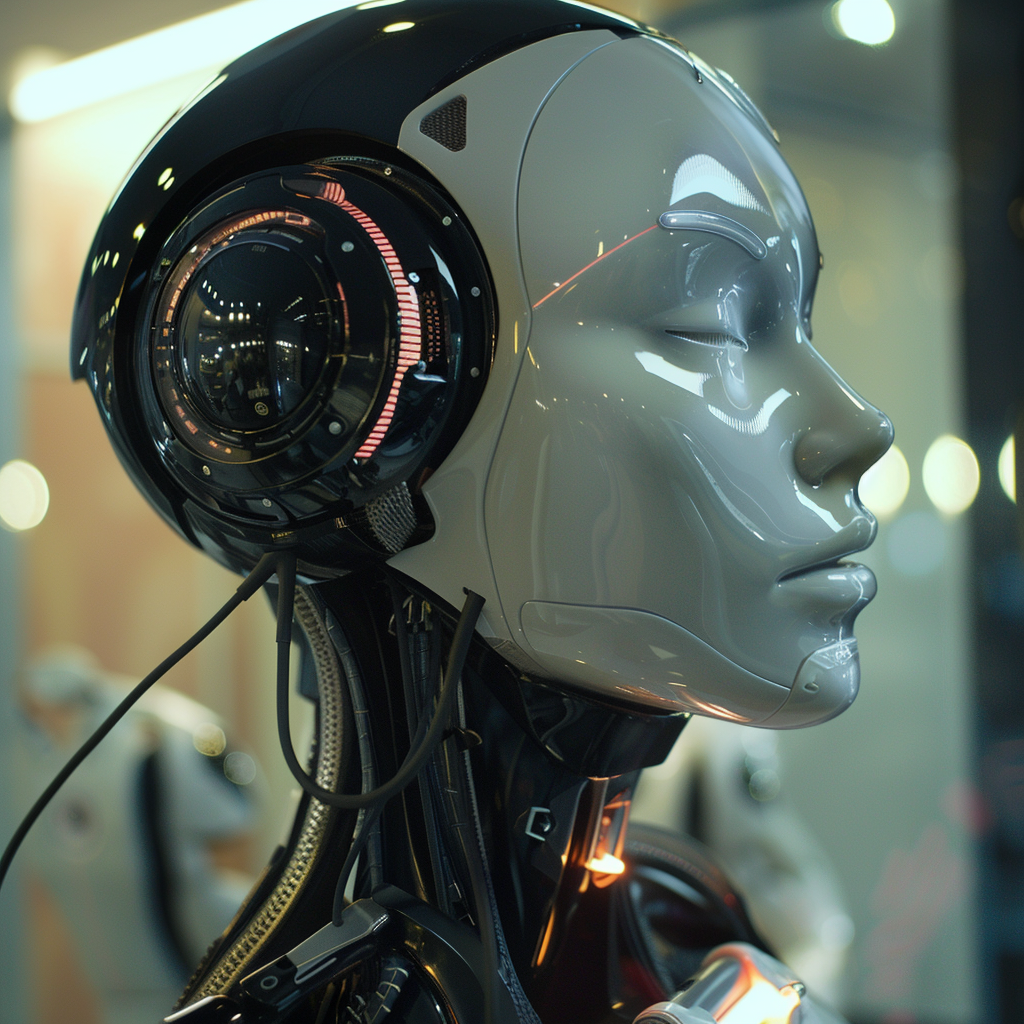The 8 Best Customer Service Chatbot Examples for Businesses
Introduction to Customer Service Chatbot Examples
In today’s rapidly evolving digital landscape, chatbots have emerged as a crucial technological innovation, transforming the way businesses interact with their customers. These digital assistants are programmed to simulate human conversation with human users, primarily through text messages, on websites, mobile devices, apps, and social media platforms. Their importance cannot be overstated, as they offer a seamless, 24/7 communication channel giving customers, significantly enhancing AI customer service experience, streamlining operations, and reducing costs.
The journey of chatbots began with simple, scripted bots that could respond only to specific commands. These early versions were limited by their lack of flexibility and inability to understand natural language. However, the advent of artificial intelligence (AI) and natural language processing (NLP) technologies has revolutionized their capabilities, enabling businesses to automate customer support efficiently. Today’s advanced chatbots are AI-driven, capable of learning from interactions, understanding complex queries, and providing personalized responses. This evolution from rigid, pre-programmed bots to intelligent, learning assistants marks a significant milestone in the field of conversational AI. Additionally, AI chatbots assist customer service agents by handling repetitive tasks, allowing human agents to focus on more complex issues and build stronger customer relationships.
The applications of chatbots are as diverse as the industries that employ them. From customer service bots that handle inquiries and complaints to sales and marketing bots that engage customers and generate leads, the use cases are vast. In the healthcare sector, chatbots can schedule appointments and provide medical advice. In finance, they offer assistance with transactions, account inquiries, and even personalized financial advice. Education, entertainment, travel, and retail are just a few more examples of industries that are harnessing the power of chatbots to offer improved services, demonstrating the wide-ranging impact of this technology across the global business landscape.
Definition and Purpose of Customer Service Chatbots
Customer service chatbots are artificial intelligence (AI) powered tools designed to interact with customers in a natural, human-like manner. These digital assistants are programmed to provide instant responses and round-the-clock support, handling regular queries and issues efficiently. The primary purpose of customer service chatbots is to enhance the customer experience by offering quick, consistent, and personalized support. By automating routine tasks such as answering frequently asked questions, routing support requests, and providing basic troubleshooting, chatbots free up human agents to focus on more complex customer interactions. This not only improves operational efficiency but also ensures that customers receive timely and accurate assistance, leading to higher satisfaction and loyalty.
Benefits of Using AI Chatbots for Customer Service
The benefits of using AI chatbots for customer service are numerous and impactful. One of the most significant advantages is the improvement in customer satisfaction. AI chatbots provide instant responses and are available 24/7, ensuring that customer queries are addressed promptly, regardless of the time of day. This level of accessibility is crucial in today’s fast-paced digital world, where customers expect immediate support.
Moreover, AI chatbots help reduce labor costs by automating routine tasks, allowing human customer support agents to focus on more complex and high-value issues. This not only optimizes the efficiency of customer service teams but also enhances the overall quality of support provided. Additionally, AI chatbots can collect and analyze customer data, enabling businesses to offer personalized support tailored to individual needs. By understanding customer preferences and behaviors, chatbots can deliver more relevant and effective assistance, further boosting customer satisfaction and engagement.
1: Customer Service Chatbots
In the realm of customer service, customer service chatbot software has become indispensable, enabling businesses to offer instant support and manage customer inquiries more efficiently. Their ability to provide immediate support and round-the-clock service ensures that customer needs are met promptly, enhancing satisfaction and loyalty. By automating routine tasks and reducing the workload on support representatives, chatbots significantly enhance customer services by managing interactions efficiently. Below are customer service chatbot examples of how a customer service chatbot has been successfully integrated into various customer relationship management and service strategies across different industries.
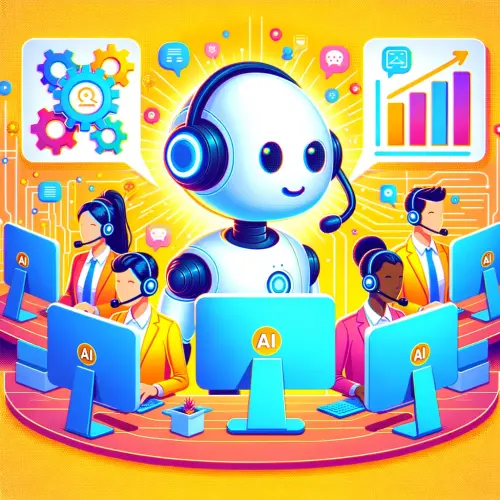
Chatbot Example 1: A Leading eCommerce Platform's Chatbot for Handling Order Inquiries and Returns
An AI chatbot example in customer service is demonstrated by a leading telecom company. Recognizing the potential of chatbots to improve customer support, the company introduced a chatbot designed to address common customer questions about technical and customer service issues, and account-related queries. This digital virtual assistant, accessible through the company’s website, mobile app, and SMS, offers troubleshooting guidance to answer customer questions for connectivity issues, billing inquiries, plan changes, and more. Selecting the best customer service chatbot is crucial for effectively handling these technical and account-related queries.
What sets this best chatbot for customer service apart is its ability to conduct diagnostic checks and guide users through step-by-step troubleshooting processes, effectively resolving many issues without the need for human intervention. For account management tasks, customers can easily check their data usage, view and pay bills, or update plan features through simple conversational chatbot interactions. The chatbot’s deep integration with the company’s customer service database allows it to deliver personalized assistance, making each customer’s experience smoother and more satisfying.
These scale customer service chatbot examples underscore the transformative impact of customer service chatbots. By automating routine inquiries and providing instant support, the best customer service chatbots not only enhance the customer experience but also streamline operations, enabling businesses to allocate human resources more effectively. As customer service chatbot and technology continues to evolve, its role in customer service is set to become even more pivotal. Check out IrisAgent’s Customer service chatbot to get started today.
Chatbot Example 2: A Telecom Company's Chatbot that Troubleshoots Common Issues and Manages Account Queries
An AI chatbot example in customer service is demonstrated by a leading telecom company. Recognizing the potential of chatbots to improve customer support, the company introduced a chatbot designed to address common customer questions about technical and customer service issues, and account-related queries. This digital virtual assistant, accessible through the company's website, mobile app, and SMS, offers troubleshooting guidance to answer customer questions for connectivity issues, billing inquiries, plan changes, and more.
What sets this best chatbot for customer service apart is its ability to conduct diagnostic checks and guide users through step-by-step troubleshooting processes, effectively resolving many issues without the need for human intervention. For account management tasks, customers can easily check their data usage, view and pay bills, or update plan features through simple conversational chatbot interactions. The chatbot's deep integration with the company's customer service database allows it to deliver personalized assistance, making each customer's experience smoother and more satisfying.
These scale customer service chatbot examples underscore the transformative impact of customer service chatbots. By automating routine inquiries and providing instant support, the best customer service chatbots not only enhance the customer experience but also streamline operations, enabling businesses to allocate human resources more effectively. As customer service chatbot and technology continues to evolve, its role in customer service is set to become even more pivotal. Check out IrisAgent's Customer service chatbot to get started today.
Features to Look for in Support Bots
When selecting a support bot, there are several key features to consider to ensure it meets your business needs and enhances your customer service capabilities:
Natural Language Processing (NLP): This feature enables the chatbot to understand and interpret human language accurately, allowing it to respond contextually and appropriately to customer queries. NLP is essential for creating a seamless and natural interaction experience.
Multichannel Functionality: A good support bot should be able to integrate with multiple communication channels, such as messaging platforms, social media, and websites. This ensures that customers can reach out for support through their preferred channels, enhancing accessibility and convenience.
Chatbot Builder: Look for a user-friendly interface that allows businesses to design and customize their chatbot without requiring extensive coding skills. This feature makes it easier to tailor the chatbot to specific business needs and update it as necessary.
Routing Options: The ability to redirect customers to human agents when the chatbot is unable to resolve an issue independently is crucial. This ensures that complex or sensitive queries are handled by a human, maintaining a high level of customer satisfaction.
Performance Analytics: Effective support bots should be able to collect and analyze data on customer interactions. This information is invaluable for refining the chatbot’s performance, identifying areas for improvement, and enhancing the overall customer service experience.
By considering these features, businesses can select a support bot that not only meets their specific needs but also significantly enhances their customer service processes, leading to improved customer satisfaction and operational efficiency.
2: Sales and Marketing Chatbot Examples
Chatbots have also revolutionized the sales and marketing sectors by automating lead generation, qualification, and even direct sales processes. These AI-driven assistants are capable of engaging potential customers in personalized conversations, and qualifying questions, guiding them through multiple channels in the sales funnel, collecting customer feedback and providing tailored recommendations. To illustrate, marketing chatbot examples like the Insomnobot 3000 by Casper have shown how chatbots can be effectively used in marketing campaigns to engage customers in a unique and interactive manner. Below, we explore two standout examples where chatbots have significantly impacted sales teams and marketing strategies.
Chatbot Example 3: A Real Estate Bot that Qualifies Leads by Asking Property Preference Questions
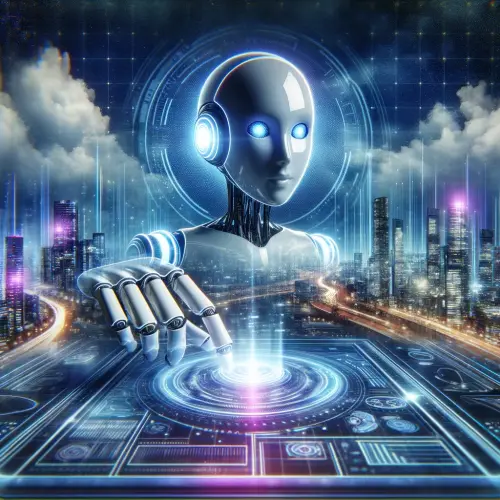
In the competitive real estate industry, quickly identifying and engaging with potential leads is crucial. The best AI chatbot example is of a pioneering real estate company that has leveraged chatbot technology to streamline this process with a bot designed to qualify leads efficiently. This live chat-bot, accessible through the company's website and social media communication channels, initiates conversations with potential buyers by asking a series of questions about their property preferences, budget, location interests, and timeline for purchase.
By analyzing responses, the chatbot can classify leads based on their readiness to buy and their specific needs. This information is then used to personalize follow-up communications and connect leads with real estate agents who can offer listings that match their criteria. The chatbot's ability to qualify leads not only saves time for agents but also enhances the live agent and customer experience by ensuring potential buyers receive attention tailored to their unique requirements.
Chatbot Example 4: A Fashion Retailer's Chatbot that Recommends Products Based on Style Preferences and Past Purchases
One of the best chatbot examples is a leading fashion retailer that has embraced chatbot technology to create a personalized shopping experience that mirrors the attentiveness of an in-store visit. Their chatbot, integrated into the retailer's online store and mobile app, engages customers with questions about their style preferences, sizes, and favorite brands. It also analyzes their past purchase history and browsing behavior to tailor product recommendations.
This proactive approach allows the chatbot to showcase items that align with the same customer base's taste, increasing the likelihood of a purchase. Moreover, the chatbot can notify customers about new arrivals, special promotions, and restocks of previously viewed items, driving engagement and repeat business. The seamless integration of this chatbot into the shopping experience not only enhances customer satisfaction but also boosts sales by making relevant recommendations that customers might not have discovered otherwise.
Chatbot Example of Sephora – Improve Customer Satisfaction With Personalized Recommendations
Sephora stands out as a prime example of how chatbots can significantly enhance the customer experience within the retail sector, particularly in the cosmetics industry. By leveraging chatbot technology on popular messaging platforms such as Kik and Facebook Messenger, Sephora has made strides in simplifying the shopping process for its users. This innovation allows customers to not only purchase products with ease but also receive personalized product recommendations and answer customer inquiries, all tailored to their individual needs.
The Sephora chatbot excels in delivering personalized customer care by employing a clever strategy: it asks users to complete short questionnaires about their beauty preferences and needs. This approach enables the chatbot to offer highly personalized product recommendations, ensuring that customers are matched with items that truly suit their tastes and requirements. As a result, the shopping experience becomes not just faster but also more relevant, reducing the time customers spend sifting through unsuitable products.
Lessons Learned:
Personalization is Key: Sephora’s own chatbot also illustrates the importance of personalization in enhancing the customer experience. By understanding and catering to the individual preferences of each customer, businesses using sales chatbots can significantly improve satisfaction and loyalty. The chatbot contributes to outstanding customer service by providing personalized recommendations, ensuring efficient and tailored assistance that meets modern consumer expectations.
Utilize Popular Platforms: Deploying chatbots with brand voice on widely used other messaging apps and platforms like Kik and Facebook Messenger can increase accessibility and convenience for customers, encouraging engagement and simplifying the path to purchase.
Efficient Customer Service: The chatbot example demonstrates how automated systems can provide effective, customer support software to service agents with support, answering queries and offering recommendations quickly, which in turn can free up human customer service representatives to handle more complex customer issues themselves.
Data-Driven Insights: The interactive questionnaires not only aid in the personalization of marketing campaigns and customer data but also enable customers to collect valuable data on their customer base’s preferences and behavior. This information can be leveraged to refine marketing strategies, product offerings, and overall user experience.
Enhanced Shopping Experience: By minimizing the time and effort required to find suitable products, chatbots like Sephora’s can transform the shopping experience, making it more enjoyable and efficient for the customer.
Sephora’s success with its chatbot implementation serves as a compelling case study for businesses looking to employ technology to improve customer engagement and operational efficiency. The key takeaway is that integrating chatbots into a digital marketing strategy can lead to a more personalized, accessible, and satisfying customer experience, setting a high standard for competitors and illustrating the transformative potential of AI in retail and e-commerce business.
These examples highlight the transformative potential of sales and marketing chatbots. By automating the lead qualification process and providing personalized product recommendations, sales processes, customer information, and customer feedback, chatbots enable businesses to engage with their customers more effectively, fostering relationships that drive sales and loyalty. As technology advances, the role of chatbots in sales and marketing is expected to grow, offering even more innovative ways to connect with and serve customers.
4: Financial Services Bots
In the financial services sector, chatbots are playing a crucial role in enhancing customer service, providing financial advice, and streamlining operations. These AI-driven assistants offer secure, personalized, and instant assistance, reflecting the industry's shift towards digital-first customer experiences. Here are two compelling examples of how chatbots are transforming the financial services industry.
Chatbot Example 5: A Banking Chatbot that Provides Account Information, Transaction History, and Financial Advice

A leading global bank has introduced a sophisticated chatbot service accessible via its online banking portal and mobile app. This chatbot platform is designed to provide customers with instant access to a wide range of financial services. Users can inquire about their account balances, review recent transactions, and even receive detailed analyses of their spending patterns. The chatbot utilizes advanced natural language processing technologies to understand and respond to queries in a conversational manner, making financial management more accessible and less intimidating for customers.
Beyond basic account inquiries, the chatbot offers personalized financial advice based on the user's transaction history and financial goals. It can suggest ways to save money, recommend investment opportunities, and remind users of upcoming bills, effectively serving as a personal financial advisor. This proactive approach to customer service not only enhances user satisfaction but also fosters a deeper relationship between the bank and customer support teams and its customers, encouraging loyalty and trust.
Chatbot Example 6: An Insurance Bot that Helps Users Select the Right Insurance Plan and File Claims
The insurance industry, with its complex products and processes, can often be challenging for consumers to navigate. Recognizing this, an innovative insurance company has deployed a chatbot to simplify the process for its customers. This chatbot, available through the company's website and app, assists users in selecting the insurance plan that best fits their needs. By asking a series of questions about the user's lifestyle, assets, and risk preferences, the bot can recommend tailored insurance solutions, making the decision-making process much simpler and more personalized.
Moreover, the chatbot streamlines the claims filing process, which is often fraught with paperwork and delays. Users can initiate claims through the chatbot, which guides them step-by-step on the information and documentation required. The bot can also provide real-time updates on the status of a claim, reducing uncertainty and improving the overall customer experience. This efficient, user-friendly approach to automated support not only enhances customer satisfaction but also optimizes the company's operational efficiency by automating routine administrative tasks.
These examples illustrate the significant impact of chatbots in the financial services industry. By providing instant access to account information, personalized financial advice, and simplifying complex processes, chatbots are not just improving the customer experience—they're also driving a more efficient, responsive, and personalized approach to financial services. As AI technology continues to evolve, the potential for chatbots in this sector is bound to expand, offering even more innovative ways to meet customer needs. Check out IrisGPT AI Chatbots for financial services that can help you get started quickly with a chatbot for financial services.
6: Entertainment and Leisure Bots
The entertainment and leisure industries have rapidly embraced chatbot technology to enhance user experiences, offering personalized recommendations and simplifying booking processes. These bots not only make leisure activities more accessible but also add a layer of personalization that significantly improves customer satisfaction. Below are two examples showcasing the innovative use of chatbots in these sectors.
Chatbot Example 7: A Streaming Service Chatbot that Recommends Movies and TV Shows Based on User Preferences
In an era where streaming platforms are in fierce competition for viewers' attention, one leading service has set itself apart with a chatbot that personalizes the viewing experience. Accessible through its app and website, this chatbot engages users in a conversation about their mood, genre preferences, and favorite shows or movies. Utilizing sophisticated algorithms and machine learning, the chatbot then recommends new and interesting content tailored to the user's tastes.
This approach not only helps viewers discover relevant content that they might have overlooked but also keeps them engaged with the platform for longer periods. The chatbot's recommendations are dynamic, evolving with each interaction to refine its understanding of user preferences. This level of personalization enhances user satisfaction and loyalty, demonstrating the chatbot's value in curating a customized entertainment experience.
Chatbot Example 8: A Travel Company's Bot that Assists with Booking Flights, Hotels, and Providing Travel Tips
Planning a trip can be overwhelming, with countless options for flights, accommodations, and activities. A visionary travel company has introduced AI bots and chatbots to make this process smoother and more enjoyable for customers. Through simple text commands or voice interaction, users can explore travel destinations, find the best deals on flights and hotels, and even book their entire trip without leaving the AI chatbot conversation and interface.
Beyond booking services, the chatbot offers valuable travel tips, such as must-visit attractions, local weather forecasts, and cultural etiquette guidelines. It can also assist with on-the-go requests, like changing flight reservations or finding last-minute accommodations. By centralizing these services within a single, conversational interface, the travel bot significantly reduces the stress of trip planning, making travel more accessible and enjoyable for everyone.
AI Chatbot Example of Marriott Hotel – Meet Your Customer Requests Effectively
The hospitality industry, encompassing everything from transportation and accommodations to dining, thrives on exceptional customer service. In this context, chatbot technology emerges as a powerful tool to enhance guest experiences by providing instant, personalized assistance with complex issues. A standout chatbot example of innovative chatbot deployment in this sector is Marriott Hotel's approach to guest services.
Marriott has embraced chatbot technology to facilitate direct communication between guests and hotel services through text messaging. This initiative showcases how a well-designed chatbot can serve as an effective intermediary, allowing guests to make requests or inquire about services without the need for a third human agent or intermediary. Whether it's requesting room service, inquiring about local attractions, or needing extra towels, guests can simply text their requests to the chatbot, which is programmed to understand and process these inquiries efficiently.
Key Highlights:
- Direct and Efficient Communication: Marriott's chatbot enables guests to communicate their needs directly to the hotel's customer service team, without waiting in line or making phone calls. This direct line of communication significantly enhances guest satisfaction by ensuring that requests are handled promptly and efficiently.
- Elimination of Intermediaries: By removing the need for intermediary participation, the chatbot streamlines the process of request fulfillment. This not only speeds up service delivery but also reduces the potential for miscommunication, ensuring that guests' needs are understood and met accurately.
- Immediate Response: One of the greatest advantages of using chatbot technology in hospitality is the ability of human agents to provide immediate responses to guest inquiries. Marriott's chatbot sales team is available 24/7, ensuring that guests receive timely assistance at any hour, enhancing their overall stay experience.
- Personalized Guest Experiences: The chatbot's ability to handle a wide range of requests allows Marriott to offer a more personal touch and personalized service to its guests. By catering to individual needs with efficiency and precision, the hotel reinforces its commitment to exceptional customer service.
Marriott Hotel's innovative use of chatbot technology underscores the potential for automation to revolutionize customer service in the hospitality industry. By effectively meeting guest requests with immediacy and accuracy, Marriott's customer service chatbot example using AI chatbots not only improves operational efficiency but also elevates the guest experience, setting a new standard for customer care in the sector. This example serves as a compelling case for other businesses in the hospitality industry to explore the integration of chatbots into their own customer service software and offerings, leveraging technology to meet and exceed customer expectations.
These chatbot examples highlight the significant impact of chatbots in the entertainment and leisure sectors. By providing personalized recommendations and relevant information for website visitors and simplifying the booking process for site visitors, these bots not only enhance the customer experience but also streamline operations, enabling businesses to serve their clients more effectively. As chatbot technology continues to evolve, its potential to transform these industries further is immense, promising even more innovative and personalized leisure experiences in the future.
Is there a better conversational chatbot than ChatGPT?
When discussing the capabilities and alternatives to ChatGPT, Google's Gemini often comes up as a noteworthy contender. Gemini represents Google's approach to building an AI chatbot that diverges from the path paved by OpenAI's GPT series. Unlike ChatGPT, which relies on the Generative Pre-trained Transformer models, Gemini is designed with a unique architecture that focuses on providing a unified voice interface along with a standardized natural language understanding model. This design choice suggests an ambition to create a more versatile tool that can excel in both text-based interactions and voice commands, potentially offering a more integrated experience across Google's ecosystem of services.
Examples of ChatGPT and Other Language Model (LLM) Chatbots:
1. ChatGPT by OpenAI: ChatGPT is known for its wide range of capabilities, including generating human-like text, answering questions, composing emails, essays, and even creating code. Its strength lies in its vast training data, enabling it to understand and generate text in a way that closely mimics human thought processes.
2. LaMDA by Google: Before Gemini, Google introduced LaMDA (Language Model for Dialogue Applications), emphasizing conversational AI. LaMDA is designed to engage in more open-ended conversations than traditional models, aiming for a natural and rich dialogue on any topic.
3. Bard by Google: In the realm of AI innovations, Google also announced Bard, an experimental AI chat service designed to integrate with Google's search engine. Bard aims to provide fresh, high-quality responses, leveraging the vast information available on the web.
4. GPT-4 by OpenAI: The successor to ChatGPT, GPT-4, pushes the boundaries further in terms of understanding and generating text. It offers more nuanced and contextually aware responses, representing the next step in the evolution of language models.
5. BlenderBot by Facebook: Developed by Facebook AI, BlenderBot aims to create more engaging and human-like conversations. It focuses on blending different conversational skills, from empathy and knowledge to personality, to provide a more rounded chatting experience.
Is There a Better Chatbot Than ChatGPT?
The question of whether there is a "better" chatbot than ChatGPT depends on the criteria used for evaluation. Google's Gemini, for example, is designed with the specific goal of integrating voice and text interfaces seamlessly, which might make it a superior option for applications requiring such functionality. However, ChatGPT's versatility, depth of its knowledge base, and ability to generate human-like text across various domains make it exceptionally powerful in its right.
In conclusion, the "better" chatbot is subjective and depends on the specific needs and contexts of use. Whether one requires a chatbot for customer service, content creation, or as a personal assistant, the choice between ChatGPT and alternatives like Gemini hinges on the unique features and capabilities that each brings to the table.
Conclusion of the Best Chatbot Examples
The integration of chatbots across various sectors has undeniably revolutionized the way businesses interact with their customers, streamlining operations and elevating the customer experience to new heights. These AI-driven virtual assistants have proven their worth by providing round-the-clock support, personalized services, and efficient handling of routine tasks. From customer service inquiries and sales assistance to financial advice and travel planning, these chatbot examples have demonstrated a remarkable ability to enhance business operations and customer satisfaction alike.
The transformative role of chatbots is largely fueled by advancements in artificial intelligence and machine learning technologies. These innovations have enabled chatbots to understand and process natural language more effectively, learn from customer interactions, and offer increasingly personalized and relevant responses. As AI technology continues to evolve, the capabilities of chatbots are expected to expand even further, opening up new possibilities for businesses to innovate in their engagement strategies and service offerings.
In light of these chatbot examples, businesses across all industries are encouraged to consider integrating chatbots into their digital strategies. Doing so is not merely about keeping pace with technological trends but is a strategic move to stay competitive in a digital age where tech-savvy consumers expect instant, personalized, and accessible customer service reps everywhere. By adopting these chatbots for customer service, companies can not only meet these expectations but also unlock new opportunities for growth, customer loyalty, and operational efficiency.
The journey of chatbots from simple automated responders to sophisticated AI-driven virtual assistants is a testament to the rapid pace of digital innovation. As we look to the future, the potential of chatbots to transform business operations and customer experiences is boundless. Businesses that recognize and leverage this potential will not only enhance their own customer service processes, teams and offerings but also set a new standard for customer engagement in the digital era.

